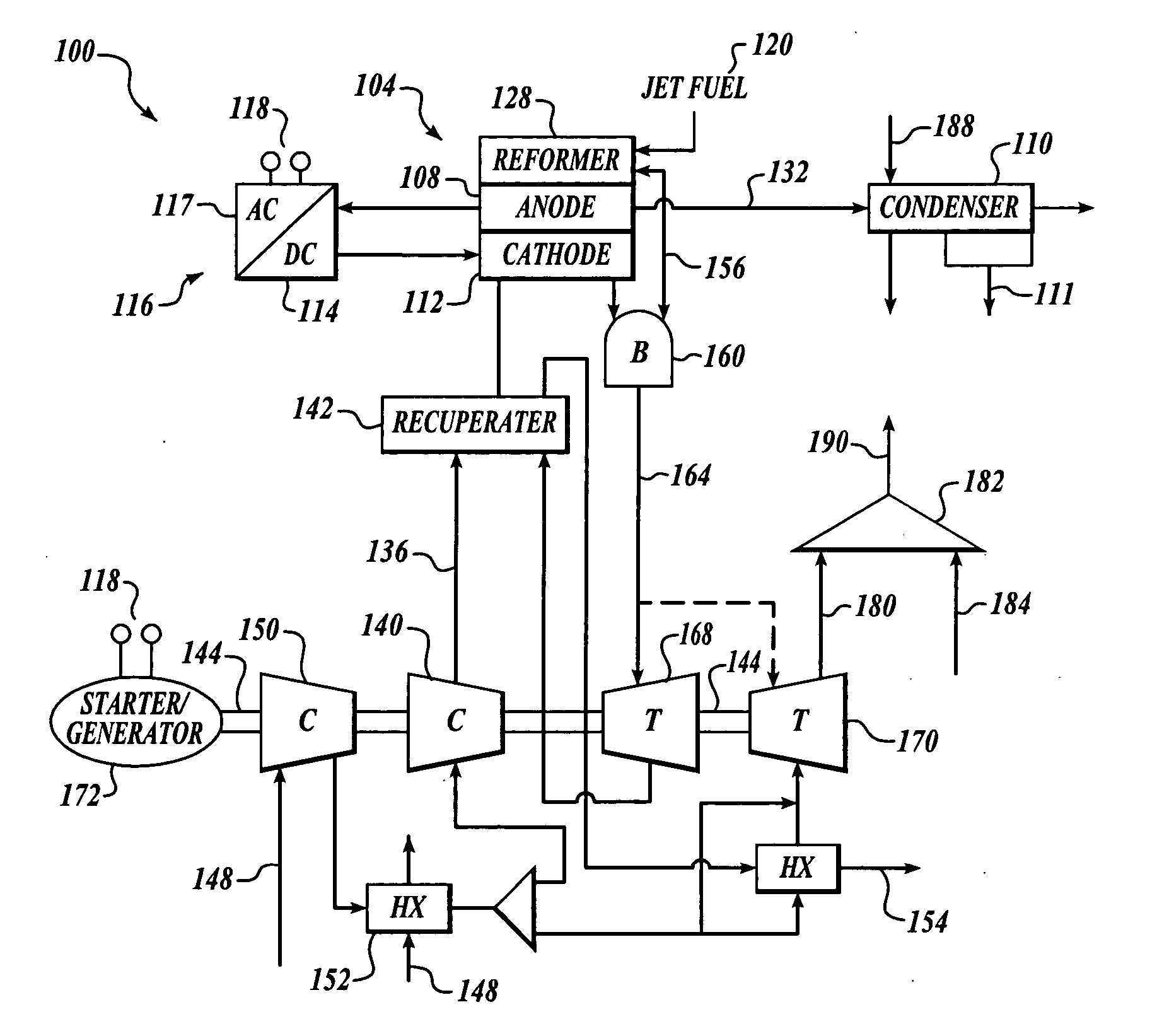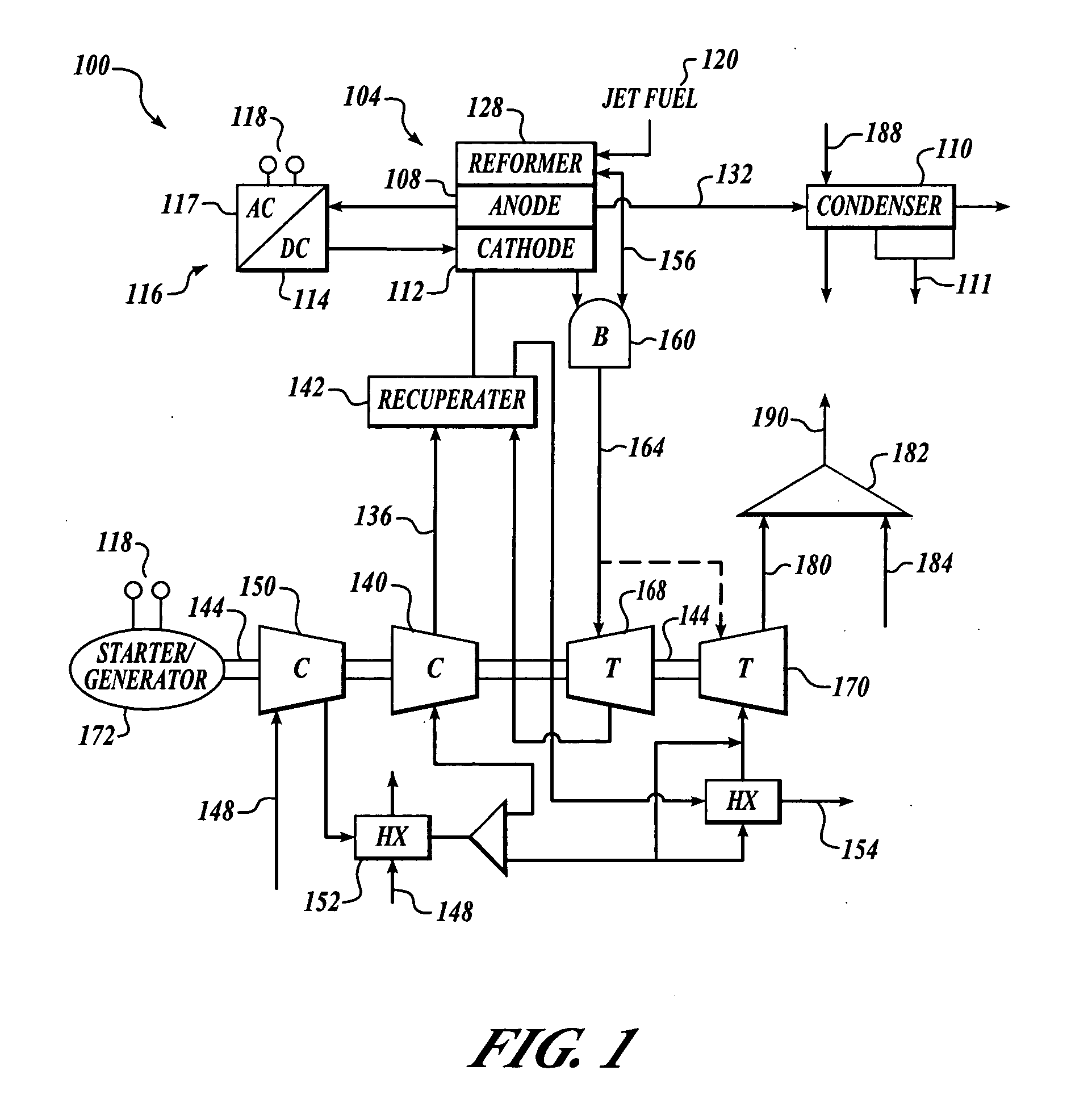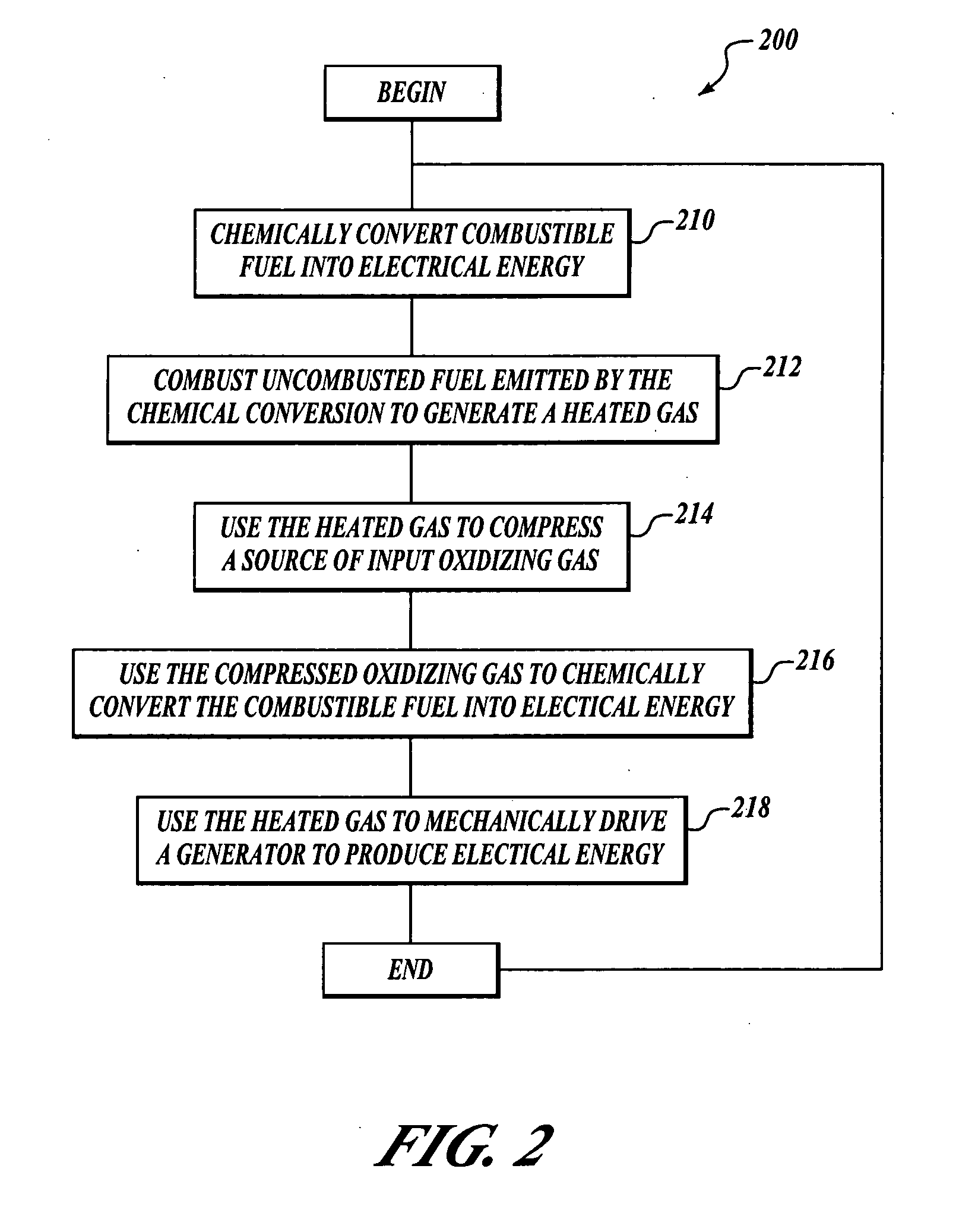Combined fuel cell aircraft auxiliary power unit and environmental control system
a fuel cell and auxiliary power technology, applied in the field of aircraft systems, can solve the problems of poor fuel efficiency, appreciable pollution of the airport environment, jet fuel uncombusted, and emissions of oxides of nitrogen (nox) emissions, and achieve the effect of reducing the weight and associated cost of aircraft operations
- Summary
- Abstract
- Description
- Claims
- Application Information
AI Technical Summary
Benefits of technology
Problems solved by technology
Method used
Image
Examples
Embodiment Construction
[0014] Combined fuel cell aircraft auxiliary power unit and environmental control systems and methods are disclosed. Many specific details of certain embodiments of the invention are set forth in the following description and in FIGS. 1 through 5 to provide a thorough understanding of such embodiments. One skilled in the art, however, will understand that the present invention may have additional embodiments, or that the present invention may be practiced without several of the details described in the following description.
[0015] In general, embodiments of the present invention may provide a desired quality of electrical and pneumatic power. In one embodiment, combustible fuel is chemically converted into electrical energy by providing a supply of compressed air. Combustible fuel and air not consumed by the chemical process is collected and burned to drive a first high temperature power recovery turbine which, in turn, drives a first compressor to supply the compressed air. Compre...
PUM
 Login to View More
Login to View More Abstract
Description
Claims
Application Information
 Login to View More
Login to View More - R&D
- Intellectual Property
- Life Sciences
- Materials
- Tech Scout
- Unparalleled Data Quality
- Higher Quality Content
- 60% Fewer Hallucinations
Browse by: Latest US Patents, China's latest patents, Technical Efficacy Thesaurus, Application Domain, Technology Topic, Popular Technical Reports.
© 2025 PatSnap. All rights reserved.Legal|Privacy policy|Modern Slavery Act Transparency Statement|Sitemap|About US| Contact US: help@patsnap.com



